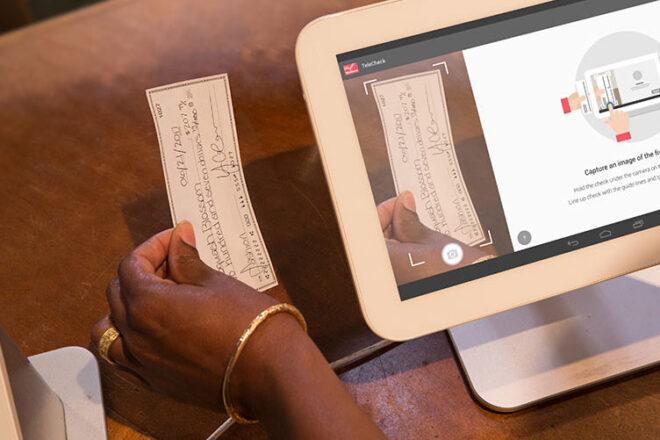Credit card fraud continues to rise, and data breaches are more common.
To make their payment environments more secure, merchants across the country have implemented solutions including chip and PIN EMV® or Apple Pay® options:
- EMV technology is embedded in a special security chip on credit or debit cards. When making purchases at the cashier counter, customers insert these chips into an EMV reader before entering in a personal identification number (PIN).
- Apple Pay is a mobile payment technology. Customers upload their credit card, gift card, loyalty card, or bank details into the Wallet app on their iPhones®, iPads®, or Apple Watches®. When at the cashier, they wave these devices across near field communication (NFC) terminals to create a connection and make a purchase.
Both of these payment solutions offer greater security than traditional magnetic stripe credit cards do.
EMV chips are difficult to clone, which is why chip and PIN is mandatory in most parts of the world. NFC requires close proximity, and in order to authorize a transaction, users provide a biometric fingerprint scan with Touch ID or a scan of their face with Face ID.
But, which payment technology is better for your business?
Differences between Apple Pay and chip & PIN
Although EMV is the older and more established of the two, its growth was initially slow in the U.S. This is changing rapidly. As of 2019, over 3.7 million merchants now accept chip cards.1
EMV chip cards still have the magnetic stripe on the back and work with older terminals, albeit for less secure transactions.
By contrast, Apple Pay only works with newer versions of the iPhone, iPad, and Apple Watch. And the merchant must have an NFC reader in order to accept payments.
Another important difference is tokenization. Although Apple Pay users upload credit card information to their devices, neither Apple nor retailers ever have direct access to sensitive financial data. All personal account numbers (PANs) are replaced with randomly generated IDs (“tokens”) that are then used to authorize one-time transactions. This makes it very difficult for criminals to ever steal or clone a user’s credit card information.
EMV cards can use tokenization, but this extra security feature isn’t necessarily standard. It depends if the merchant services provider a business uses to accept electronic payments offers tokenization technology.
In the online world, EMV technology becomes obsolete. With online shopping carts, there’s no way for customers to use the embedded chip. Thus, chip and PIN cards are about as secure as normal swipe and sign plastic. Whereas Apple Pay’s secure technology works for all retail environments — online and offline.
Which payment option should you add to your business?
Most new chip-based card readers come with near field communication (NFC) technology that allows for both payment types. Check with your payments provider to determine if you have the right hardware or software.
If you need help getting started accepting EMV chip and PIN or mobile wallets, connect with a representative today.
1 “Visa Report: 3.7 Million Merchant Locations Accept EMV Cards,” ETA Transaction Trends, 9 September 2019
Ecommerce
Is ACH secure?
The Automated Clearing House (ACH) is a federally-regulated electronic network used by banks to send and receive bill payments, eChecks, direct deposit statements,...
Read more






